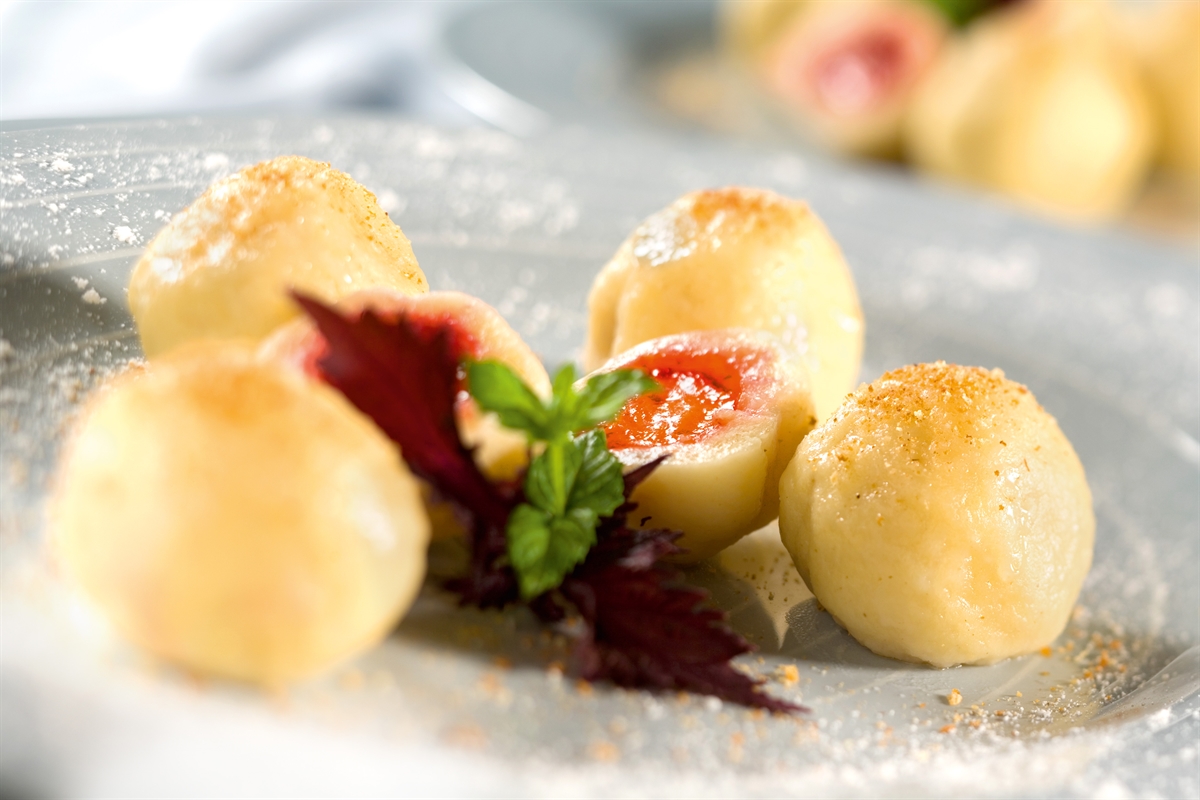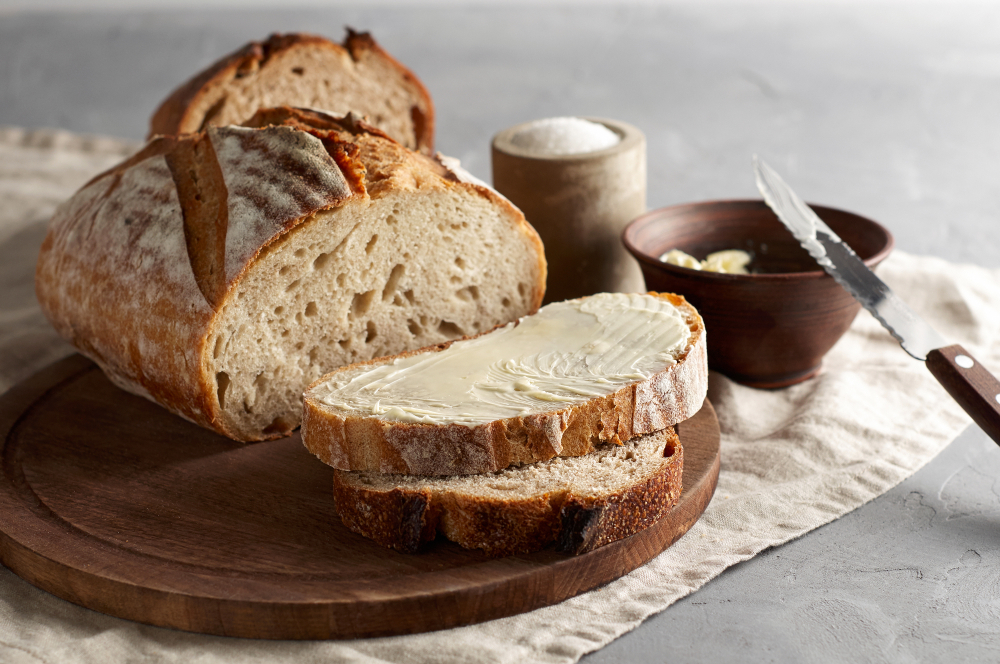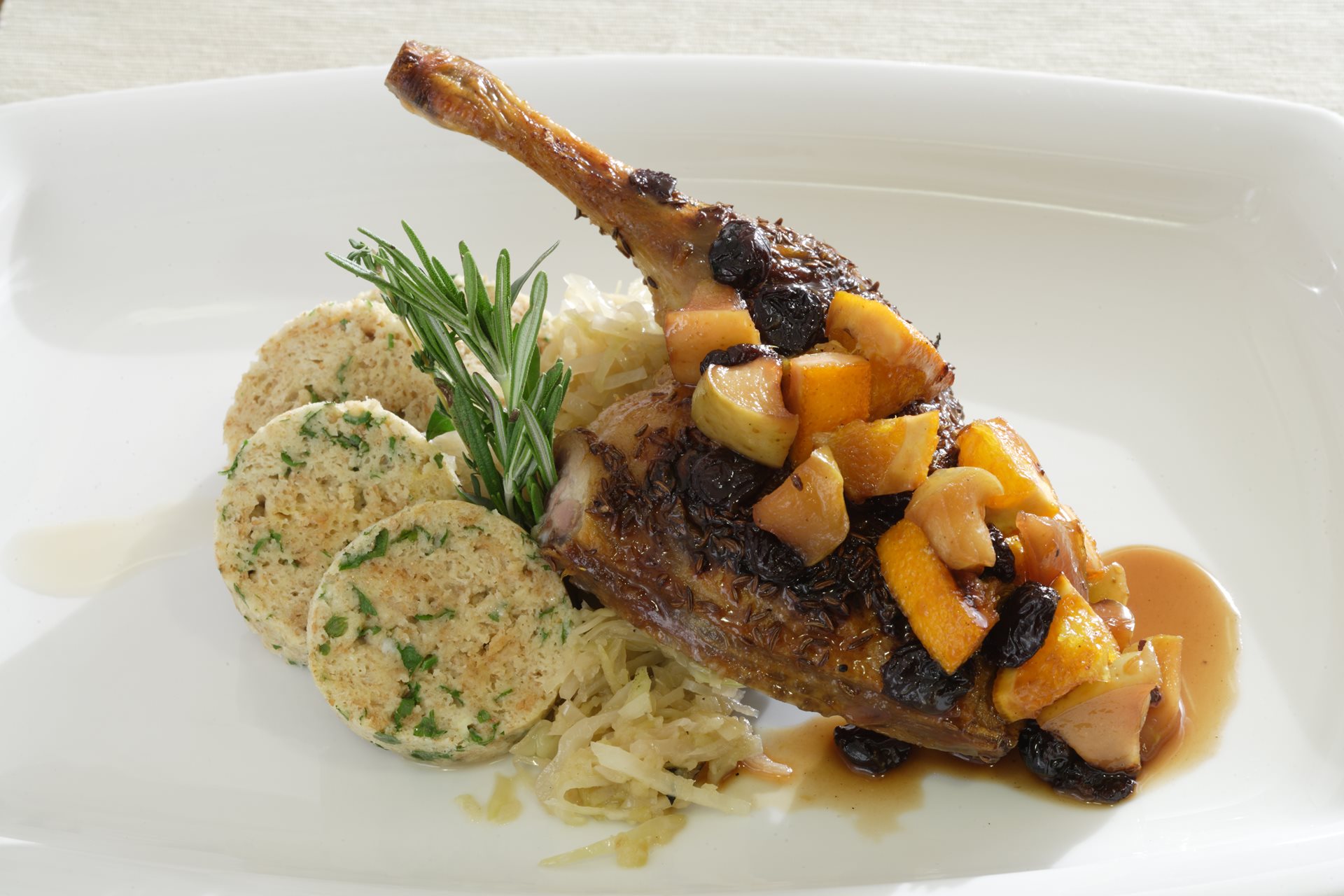Czech cuisine has always been more European than typically Slavic, thanks to the position of Bohemia in the centre of Europe. There used to be a wealthy royal and later imperial court, and the international marriages of the Czech aristocracy enriched Czech cuisine, transforming it into a cuisine at the top Central European level.
Rich as well as simple
There are only few cuisines that have such a balanced ratio between dishes that used to only be served on the tables of the rich, and simple dishes that poor people used to cook. A serving of roasted pork is a Czech specialty, as is as a simple potato pancake. The lack of meat led to the creation of the typically Czech fruit-filled dumplings, pastries filled with plum butter, and fruit pies.The dumpling is the king
Typical Czech cuisine offers plenty of excellent sauces that require dumplings on the side. Even though the Czechs, Austrians and Germans argue about the origin of the dumpling, it is only in the Czech Republic where you will still find it on the menu of every restaurant, as well as at home. The menus of Czech restaurants always include several types of dumplings made from both white-bread and potato. Both varieties are normally offered with roasted duck in restaurants, as well as at least two types of stewed cabbage. The white-bread dumplings also accompany a beef roast with cream sauce, called “svíčková”, while the potato dumpling is the perfect companion for excellent smoked meat with horseradish sauce. And if you like sweet dishes, you should try fruit-filled dumplings with butter and cottage cheese, or served sprinkled with the popular poppy seeds.
Herbs and spices
Caraway seed and marjoram are typical Czech and Moravian spices; venison requires juniper fruit. As far as green herbs are concerned, it is parsley, chives and lovage. Naturally, garlic is also frequently used.Bread and baked goods
Czech bread is darker, made from rye flour, or a mix of rye and wheat. Bread baked with rye starter is very popular; the starter gives the bread moisture and a slightly sour taste. Bread rolls and buns with salt and caraway seeds are also a must on the Czech table.Do not believe the claims that Czech cuisine is heavy and fattening; such meals are only for special occasions, just like in any other national cuisine. Czech cuisine also uses a number of light and healthy vegetable dishes, using chicken, turkey and rabbit meat. If you really want to “taste the Czech Republic”, you should only visit those restaurants that know how to cook Czech dishes. Let the Czech Specials logo guide you when choosing one.

Roasted Duck with Fruit and Ginger Cabbage, Served with Karlovarský Dumplings
Ingredients:1,200 g duck
salt
whole caraway seeds
2 tablespoons of honey
1 apple
1 orange
a handful of raisins
Ginger cabbage
1/2 head of white cabbage
1 onion
fresh ginger (thumb-sized piece)
125 g butter
white wine
1 large apple
salt
Soft Karlovarský dumpling
1 kg white bread
4 eggs
50 g butter
250-300 ml cooking cream
2 handfuls of curly parsley
nutmeg flower
salt
butter for spreading
How to make it:
Salt the duck, sprinkle with caraway seeds and rub it with honey. Roast it on the fruit and raisins. Prepare the sauce from the drippings.
Ginger cabbage
Slice the cabbage and finely cut the onion and ginger into small cubes. Fry it all off in hot butter, slowly add the wine and stew until soft. At the end, add grated apple (to thicken the cabbage) and season with salt.
Soft Karlovarský dumpling
Cut the bread into small cubes and leave them to dry in the oven. Remove from the oven and cover with the cream before adding the melted butter, egg yolks and chopped parsley. Season with salt and nutmeg and mix well. Fold in the beaten egg whites. Wrap in foil and steam for 15 to 20 minutes according to size.

